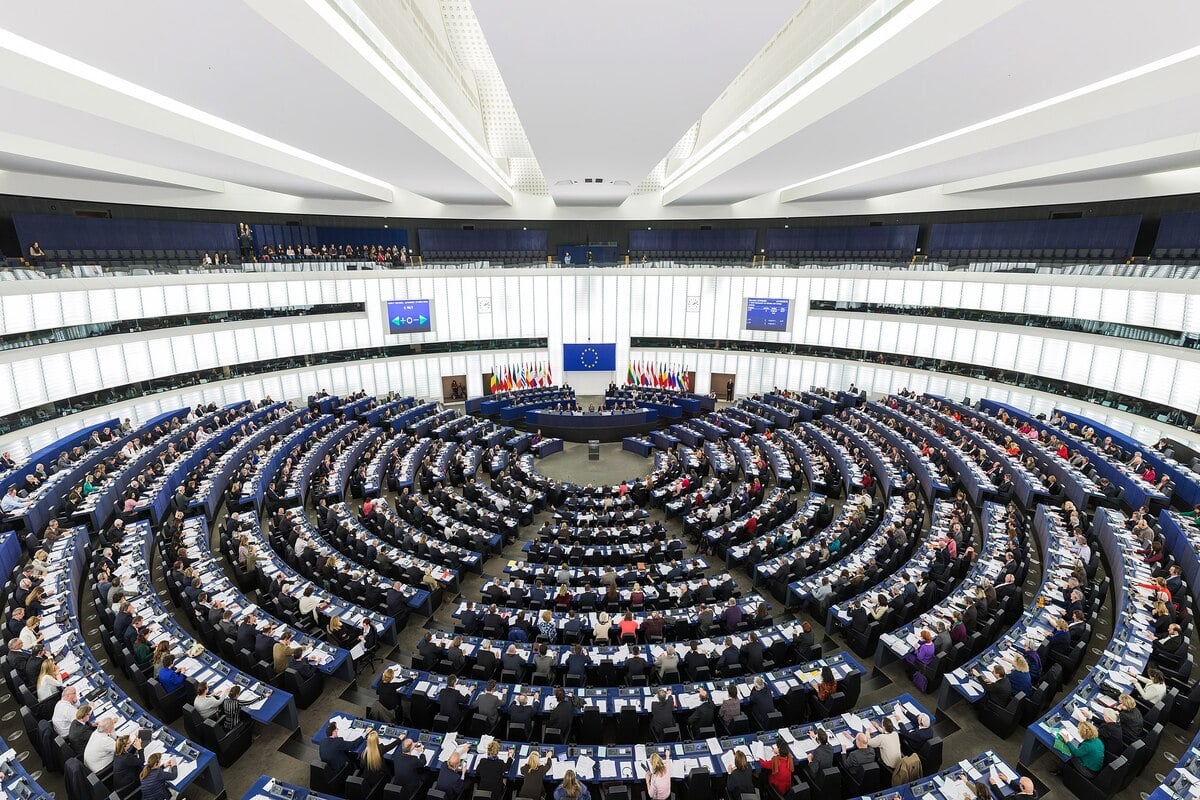29 June, 2023 — MiCA, the ‘exhaustive’ regulatory framework erected around the crypto industry within the EU came into effect. Its purpose? To “regulate something that’s borderless, open-source, decentralised and constantly evolving”. Innovation regulation does not purport great expectations, is MiCA any different? Are innovative and autonomous financial instruments supported by the voting outcome of the European Parliament and Council? Will there exist a cryptocurrency industry in the EU this time next year, when the policies have done a complete revolution?

Source: Wikipedia
MiCA: Pathways to the Regulation of Crypto-Assets
The Markets in Crypto-Assets Regulation (MiCA) is a legislative framework introduced by the European Commission to ‘harmonise’ the regulation of crypto markets within the European Union (EU). The regulatory framework oversees crypto issuers, developers, and providers, and anyone who uses and owns any crypto. For now, MiCA rules will be applicable to three types of digital assets: Stores of value (coins and tokens), Asset-Reference Tokens (ARTs), and E-Money Tokens (EMTs).
MiCA falls into the broader European Digital Finance Strategy, which aims to shape and regulate digital finance within the EU. Beyond cryptocurrency and blockchain technologies, this includes digital fiat payment services and digital identity. MiCA is the component addressing regulation of the rapidly evolving crypto asset market. What harmony do standardised rules for the issuance, trading, and services related to crypto assets entail?
The “White Paper” on MiCA published by the World Economic Forum (WEF) in May 2023 lists pertinent questions addressed by the new regulatory framework, including:
- Definition and classification of crypto assets;
- Legal and policy issues of crypto assets moving (being transacted) from centralised and decentralised structures;
- Oversight over crypto assets and institutions to address risks like cybersecurity, consumer protection, money laundering, and market integrity;
- And establishing of a consistent, coordinated, and effective regulatory framework for crypto assets through collaboration between policymakers, regulatory, and industry.
Seemingly basic objectives from traditional governments, concentrated on regimenting money-making aspects of the cryptocurrency industry, while enforcing the reduction of decentralisation through mandatory compliance to centralising laws.
Examining the outcomes of its regulation, what is the purpose of MiCA? In practice — rather than melodic words.
The Purpose of MiCA
Leaders of the G7 acknowledge that “effective monitoring, regulation and oversight are critical to addressing financial stability and integrity risks posed by crypto-asset activities and markets,” says Jon Ho of Standard Chartered. Hence, the European Commission has made it priority to “avoid regulatory arbitrage, while supporting responsible innovation.” Risk posed by cryptocurrency — the recurrent sentiment echoed from every report on MiCA — is isolated into a realm which already makes onboarding new users extremely difficult. Decentralised finance (DeFi) and blockchain literacy initiatives are completely lacking within MiCA or the broader Digital Finance Strategy for Europe. Not because education isn’t a logical component to regulation and adoption of DeFi, but because it doesn’t fit into the benefits that a fantasised danger and vague knowing endow authorities with: enablement of power overreach.
From digital finance, the EU wants new ways of channelling funding to EU businesses; support for Europe’s economic recovery strategy and new channels to mobilise funding to support the Green Deal and the New Industrial Strategy for Europe; financial market integration in the Banking and Capital Markets Unions; and strengthening of Europe’s ability to retain and reinforce its open strategic autonomy in financial markets.
These are achievable results from successful adoption of the cryptocurrency and blockchain industry. Integration of blockchain payment systems for SMEs allows for safer and more dependable transactions which are quick, cost-effective, and without hindrance from any border. Meanwhile, Proof-of-Work (PoW) cryptocurrencies can use renewable energy and excess energy from power plants, reducing grid overload through optimisation of energy.
On MiCA’s end, successful incorporation of the crypto industry throughout the EU requires cooperation from every participating jurisdiction and the industry, which regardless of insistence of participation in decisive proceedings does not have much choice or say.
MiCA is allegedly made to achieve a lot:
- Harmonisation of Regulations: Establish consistent regulatory standards across EU member states for crypto-assets and related services to minimise possibility of businesses exploiting regulatory differences between countries.
- Investor Protection: Expand investor and consumer protection in the crypto market through centralisation, including mandatory disclosure of information and adherence to anti-money laundering (AML) and counter-terrorism financing (CTF) regulations to prevent fraudulent activities.
- Market Integrity: Prevent market manipulation, insider trading, and other abusive practices that can undermine the integrity of the crypto market.
- Regulation of Issuers: Establish disclosure requirements, standardised white papers, and liability provisions for misleading or false information.
- Strengthening Authority Oversight: Empower national authorities and the European Securities and Markets Authority (ESMA) to supervise and enforce the regulations to ensure compliance.
- Promotion of Innovation: Encourage innovation by providing a clear legal framework for businesses and developers to operate within. Distinguishing between different types of crypto-assets and applying regulations proportionately based on the risks associated with each type.
- Cross-Border Passporting: Allow crypto-asset service providers that are licensed or registered in one EU member state to offer their services across other member states without the need for separate authorisations.
- Legal Certainty: Provide legal clarity by defining different types of crypto-assets and their regulatory treatment, reducing ambiguity and uncertainty for market participants and users.
What is the nature of innovation regulators so insistently seek to promote? And how is our understanding of innovation intended to differ from that which is supported by traditional authorities? On paper, the MiCA objectives are mostly reasonable, but given the nature of wording, and the presented legislation, the grey area of dissonance is immensely significant.
MiCA: The Real Reason
Becoming a lucrative and environmentally favourable addition to the EU landscape does not come without an ultimatum sacrifice. Since the intent of MiCA is to mould and use the crypto and blockchain industry as a cog, whose purpose is in keeping the EU financial machine afloat and going — the nature of crypto and blockchain must be completely altered in accordance.
Why? Because the purpose of cryptocurrency and blockchain technology is to create a decentralised, digital currency system (rather than to serve as a prop for the faulty and failing traditional financial system and those it disproportionately empowers).
Capability to operate independently of traditional financial intermediaries like banks and governments, resistance to control and manipulation, facilitation of peer-to-peer transactions, transparency, security, pseudonymity, limited supply preventing inflation, trustlessness, financial inclusion and innovation are incongruent with centralised regulation, market manipulation, inflation, and economic instability inherent to traditional financial systems.
In reality, as mentioned in the “Proposal for a REGULATION OF THE EUROPEAN PARLIAMENT AND OF THE COUNCIL on Markets in Crypto-assets, and amending Directive (EU) 2019/1937”, WEF’s “Pathways to the Regulation of Crypto-Assets: A Global Approach”, and the “Digital Finance Package” adopted by the European Commission in 2020, the purpose of regulating cryptocurrency and blockchain technologies is to centralise the industry as much as possible, direct their financial benefit influx into centralised finance, tax wherever possible, and discourage new users from onboarding. These are the real meanings of market integrity, harmonisation, responsible innovation, and investor protection.
MiCA: On Paper vs. In Practice
Market Integrity: Market Centralisation
Integrity of the cryptocurrency market cannot be maintained if it is controlled by a centralised government. Giving authorities power to access smart contract keys or other sensitive information leads to centralization of control. This centralised control is easily and eagerly misused to censor certain transactions, freeze assets, or exert undue influence over the decentralised nature of blockchain networks. Once regulatory capture occurs, powerful interests in the industry can influence the market in their favour.
This goal is also the reason behind the European Commission’s push to have uniform regulations throughout the EU. Stifling regulations in one jurisdiction lead to an exodus of the industry to more favourable jurisdictions, which becomes much harder once regulation is consistent. That is also to say, that the industry has no say in its fate when any harmony which could be borne of collaborating with industry participants was never given chance to happen.
Regulatory Harmonisation: Bleeding of Benefits into TradFi
Regulatory harmonisation of technologies designed to operate outside traditional regulatory frameworks is a challenge, because they do not require the imposition of government control — they are controlled by consensus mechanisms, which record and ensure the validity of transactions and wherein the network reaches agreement on the order of transactions.
So where is legal control warranted and to what extent? Centralised cryptocurrency businesses like exchanges, wallet providers and initial coin offerings (ICOs) directly interact with the traditional financial system and should be regulated instead of the underlying decentralised technologies. Centralised businesses in the cryptocurrency industry already enforce anti-money laundering (AML), know-your-customer (KYC) and auditing practices.
Responsible Innovation: Censorship and Control
Due to the emphasis on not-smothering innovation, the approach to regulating “responsible innovation” is especially egregious. Under MiCA, developers of smart contract, stablecoins and other cryptocurrencies are required to provide regulatory authorities with access to the keys that control the smart contracts underlying those assets. Smart contracts are self-executing contracts with the terms of agreement directly written into code. They are a fundamental component of blockchain systems and cryptocurrencies.
By providing regulatory bodies with complete access to smart contract keys, authorities can review the code, monitor and alter the functionality of the smart contracts. This means that at any time, without warrant, regulators can change, censor, or shut down the entire smart contract.
No other industry faces penalising control prior to provable fault. In fact, laws governing entities such as central banks are not reinforced and completely tightened even after decades of fraud. The logical conclusion is that the freedom enjoyed by banks to steal benefits those with power to regulate. And since the reasoning behind this regulation is transparency, regulators and traditional financial institutions should lead by example.
Investor Protection: Discourage Usage
The only investor who is protected is an investor who is educated. Knowledge, the ability to think for oneself, decipher the true meaning behind peddling words, analyse and assess risks independently is the only true protection in investment.
Shitcoins are not the progenitor of investment fraud: ponzi and pyramid schemes, pump and dumps, phishing, real estate fraud, commodity, binary options and forex scams, predatory lending, high interest rates and a wealth of other cons have and continue to exist without crypto. The instances where fraud does occur within the industry, is likely exercised by the usual suspects: the likes of SBF and others who centralise the industry and have close ties to authorities. Yet, under MiCA, users and developers pay for the mistrust which should be turned to regulators and their close circles.
Hopefully, MiCA will weed out some of the money-grab projects in the industry, reducing the amount of litter advertised and available on the market. However, there is not much trust in or proof of an authority’s ability to act fairly and in service of people’s autonomy. Again, returning us to point out that the regulation was not created to help benefit every regular person as crypto and blockchain technology was intended.
Without educational initiatives, people will continue to make financial mistakes, as is their right. But why are there no educational initiatives from the same hands which right stringent and complex laws?
Give Up Your Keys, There is No Point
There is no room for decentralisation in MiCA: rather, there is no room for MiCA in the DeFi space. Understanding the functions and fundamentals of cryptocurrency and blockchain technology, as well as the ability to think critically rather than be driven by greed, will protect consumers much better than censorship, centralisation, and total control. In the hands of the government, only those who do not want to think feel as though they benefit.
If a regulatory framework must be created, it needs to support innovation and decentralisation while still addressing legitimate concerns related to consumer protection, market integrity, and financial stability. Achieving this requires a balanced collaboration between regulators, industry participants, and stakeholders, much like in a decentralised autonomous organisation (DAO). However, the self-governing nature of cryptocurrency negates necessity in extra regulation from unbiased third parties.









